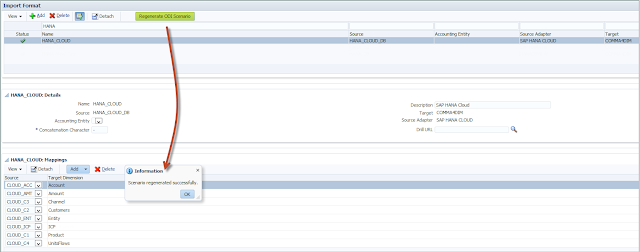Do you have multiple source files that have to be merged so you can import them as a single one? This requirement is quite common, especially in automated data loads.
For example, our ERP system is exporting two files for Balance Sheet and Profit & Loss. We want to import them as a single file under the same POV. Merging the source files is the solution.
The approach taken is to merge files by writing chunks into target file. In this way, we avoid memory issues when having large source files.
Let's have a look!
For example, our ERP system is exporting two files for Balance Sheet and Profit & Loss. We want to import them as a single file under the same POV. Merging the source files is the solution.
The approach taken is to merge files by writing chunks into target file. In this way, we avoid memory issues when having large source files.
Let's have a look!
Merging a list of files by writing chunks
''' Snippet: Merge a list of files Author: Francisco Amores Date: 23/05/2016 Blog: http://fishingwithfdmee.blogspot.com Notes: This snippet can be pasted in any event script. Instructions: Set log level (global or application settings) to > 4 Hints: Use this snippet to merge multiple single files into ont. It write chunks to avoid memory issues with large files FDMEE Version: 11.1.2.3 and later ---------------------------------------------------------------------- Change: Author: Date: ''' # initialize srcFolder = r"C:\temp" tgtFolder = r"C:\temp" listSrcFilename = ["file1.txt", "file2.txt", "file3.txt"] tgtFilename = "merge.txt" # import section import os import shutil try: # Open Target File in write mode tgtFilepath = os.path.join(tgtFolder, tgtFilename) tgtFile = open(tgtFilepath, "w") # Log fdmAPI.logInfo("File created: %s" % tgtFilepath) # Loop source files to merge for srcFilename in listSrcFilename: # file path filepath = os.path.join(srcFolder, srcFilename) # Log fdmAPI.logInfo("Merging file: %s" % filepath) # Open file in read mode srcFile = open(filepath, "r") # Copy source file into target # 10 MB per writing chunk to avoid big file into memory shutil.copyfileobj(srcFile, tgtFile, 1024*1024*10) # Add new line char in the target file # to avoid issues if source file don't have end of line chars tgtFile.write(os.linesep) # Close source file srcFile.close() # Debug fdmAPI.logInfo("File merged: %s" % file) # Close target file tgtFile.close() except (IOError, OSError), err: raise RuntimeError("Error concatenating source files: %s", err)
Code snippets for FDMEE can be downloaded from GitHub.










